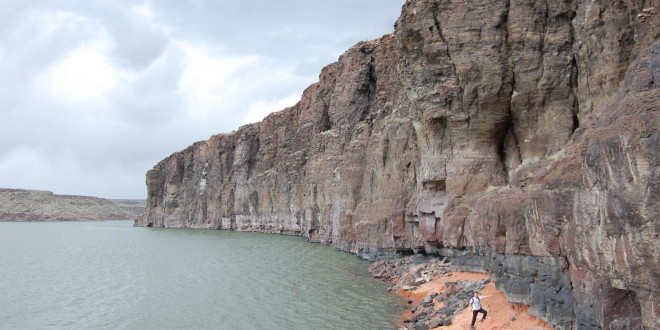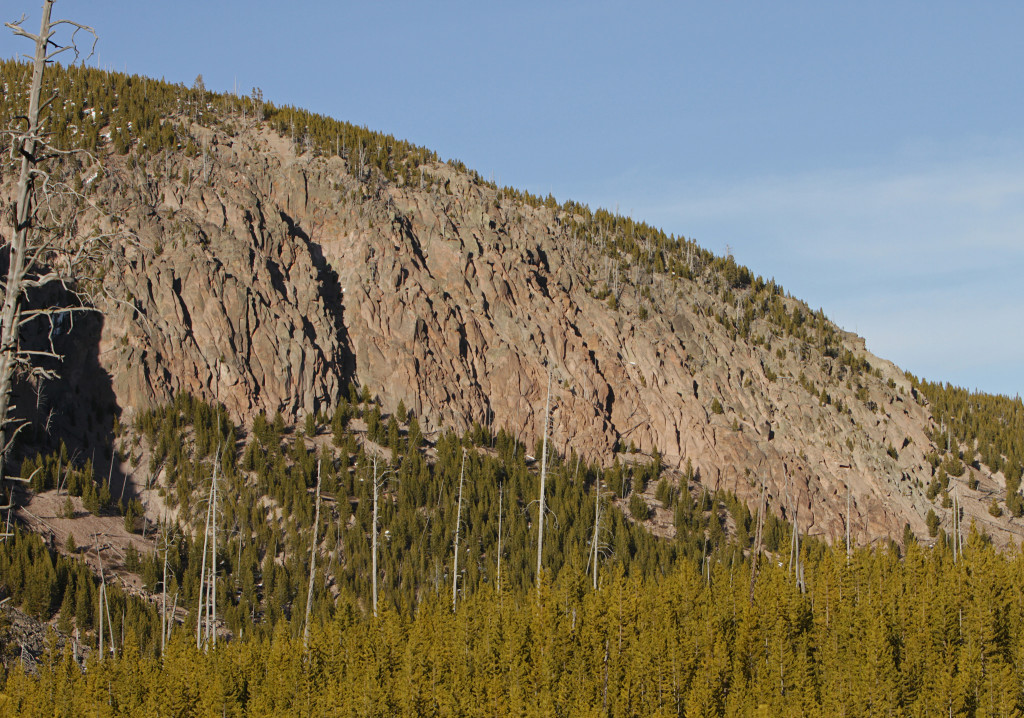It’s common knowledge eruptions occurred in the Greater Yellowstone Region.
Indeed, it’s why Yellowstone is full of geysers, hot springs, terraces, and other hydrothermal features, as it sits above a massive caldera and magma plume. Further, said caldera is the product of a “hot spot” of magma, traveling under the U.S. as the planet’s plates shift. Scientists (and other observers) have held that Yellowstone and other sites along the hotspot track were the site of massive eruptions, which deposited ash across the continental United States, with Yellowstone producing some of the most massive..
Now, however, a research tem led by the University of Leicester believe they’ve pieced together the region’s real volcanic history, positing a number of “giant super-eruptions” that easily surpass what occurred in Yellowstone. From Phys.org:
The international research team suggests that while the number of volcanic eruptions thought to have originated from the central Snake River Plain in Idaho, USA is less than previously believed, the 12 recorded giant eruptions were likely ‘significantly larger’ than research has previously suggested.
Dr Tom Knott, Professor Mike Branney and Dr Marc Reichow, from the University of Leicester’s Department of Geology’s Volcanology Group, conducted the research with a team of international collaborators from the University of California, Santa Cruz, the University of Copenhagen, Denmark and Idaho State University.
Using a multi-technique approach, including whole-rock and mineral chemistries, palaeomagnetic data, and radio-isotopic dates, the team has been able to ‘fingerprint’ individual eruption deposits and correlate these over vast regions (e.g., 1000’s km2).
In establishing widespread correlations, the team drastically reduced the number of eruptions previously thought to have originated from the central Snake River Plain by more than half.
The researchers have reported that one of the super-eruptions from the Yellowstone hotspot-track, defined as the Castleford Crossing eruption, occurred about 8.1 million years ago and estimate the eruption volume to have exceeded 1,900 km3. The single volcanic sheet covers an area over 14,000 km2 in southern Idaho, and is more than 1.3 km thick in the caldera of the super-volcano.
Yellowstone’s Eruptions
For context, the eruption that created the Yellowstone caldera (entitled the Lava Creek Eruption, ~640,000 years ago) ejected >1000 km3 in rhyolite, according to a paper published in Geochemistry, Geophysics, Geosystems Journal. You can see part of the tuff formation (pictured above) left behind by the eruption at Tuff Cliff along the Gibbon River.
The other two eruptions associated with the Yellowstone region are the Mesa Falls Eruption (1.3 million years ago), which ejected 280 km3 of material and formed the Henry’s Fork Caldera just west of the Park in Idaho and the Huckleberry Ridge Eruption. The Huckleberry eruption (2.1 million years ago) was enormous, spewing 2500 km3 of material, creating the Island Park Caldera, which underlies most of the southwestern corner of the Park (including Old Faithful and West Thumb).
The caldera researchers say their findings shed light on this turbulent process—and illustrate just how varied Yellowstone’s volcanic history really is. From Phys.org:
Dr Knott said: “While it is well-know that Yellowstone has erupted catastrophically in recent times perhaps less widely appreciated is that these were just the latest in a protracted history of numerous catastrophic super-eruptions that have burned a track along the Snake River eastwards from Oregon to Yellowstone from 16 Ma to present.
“The size and magnitude of this newly defined eruption is as large, if not larger, than better known eruptions at Yellowstone, and it is just the first in an emerging record of newly discovered super-eruptions during a period of intense magmatic activity between 8 and 12 million years ago.”
 Yellowstone Insider Your Complete Guide to America's First National Park
Yellowstone Insider Your Complete Guide to America's First National Park







You must be logged in to post a comment.